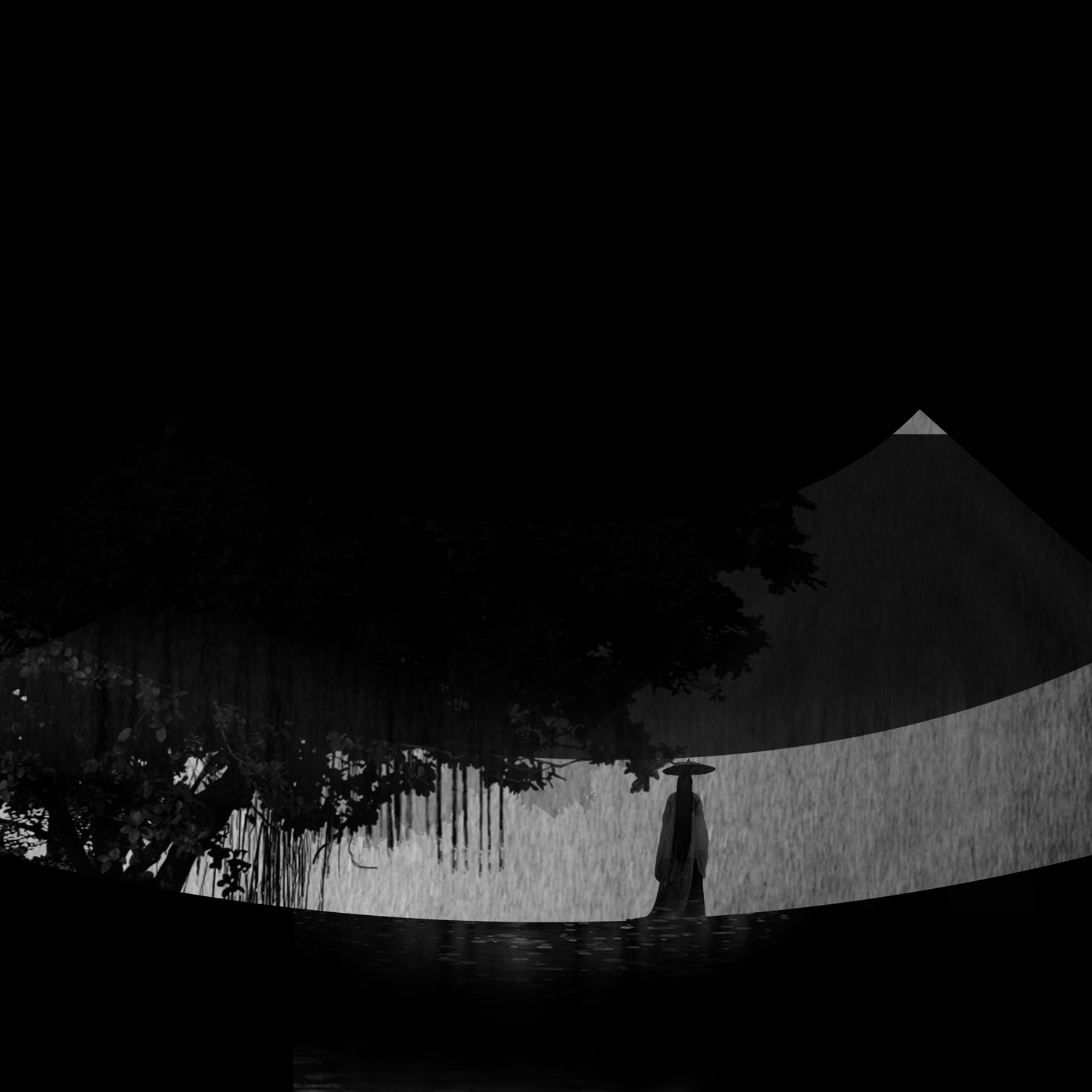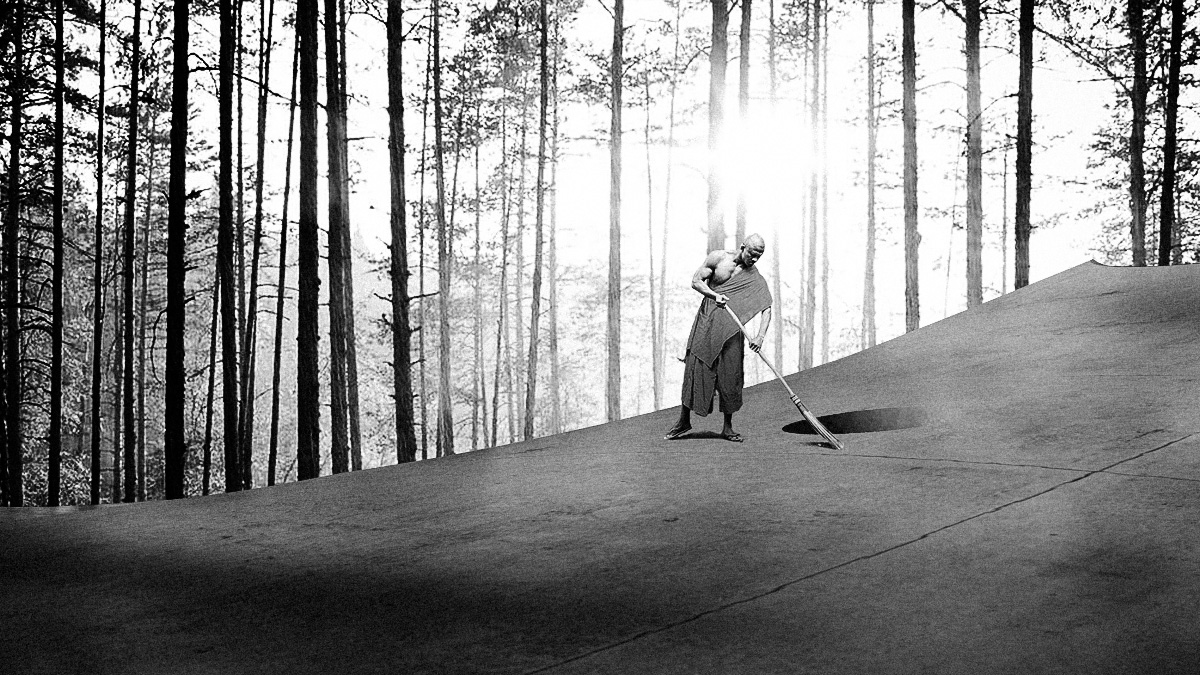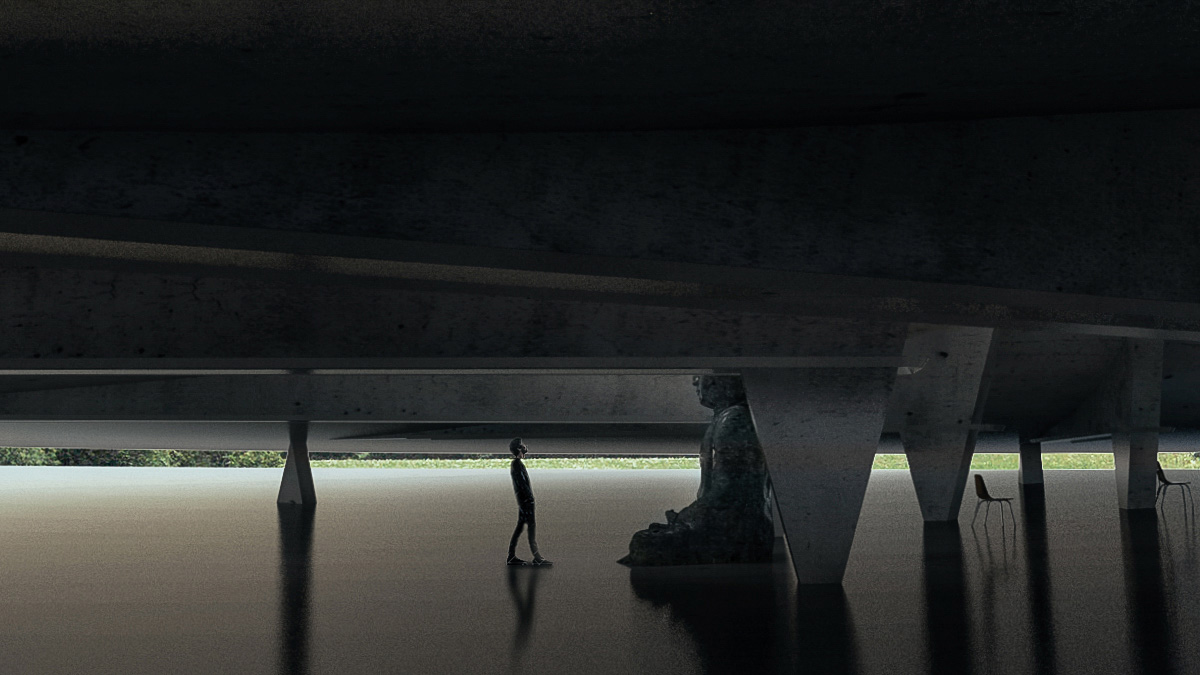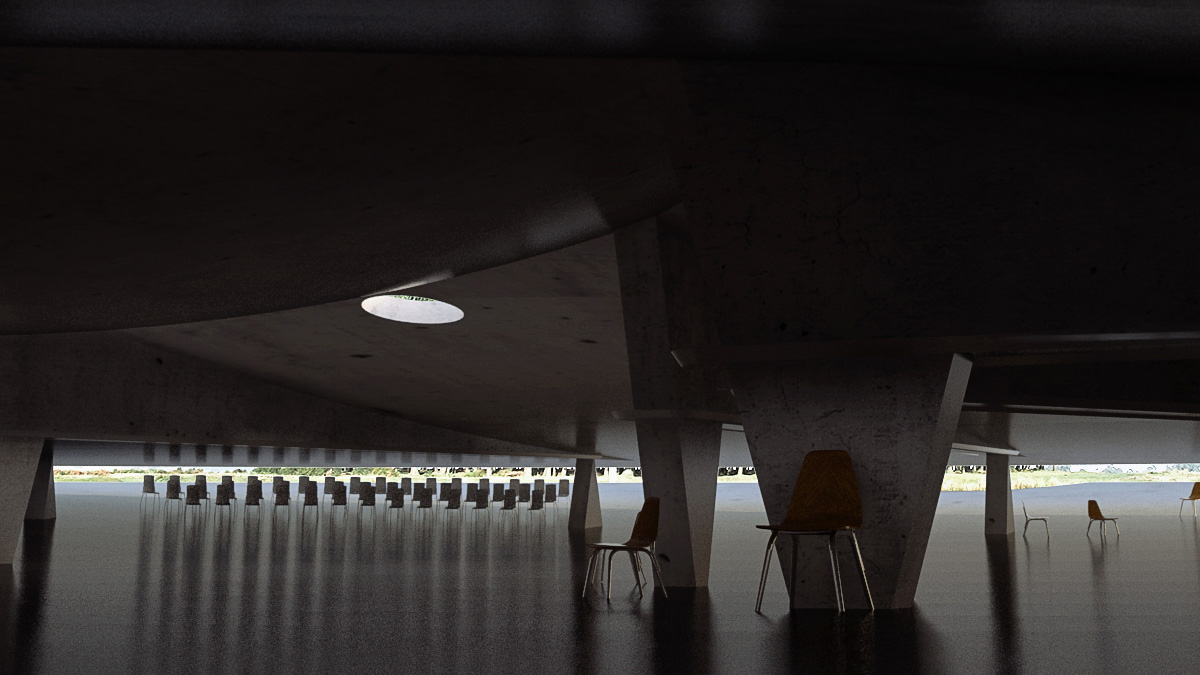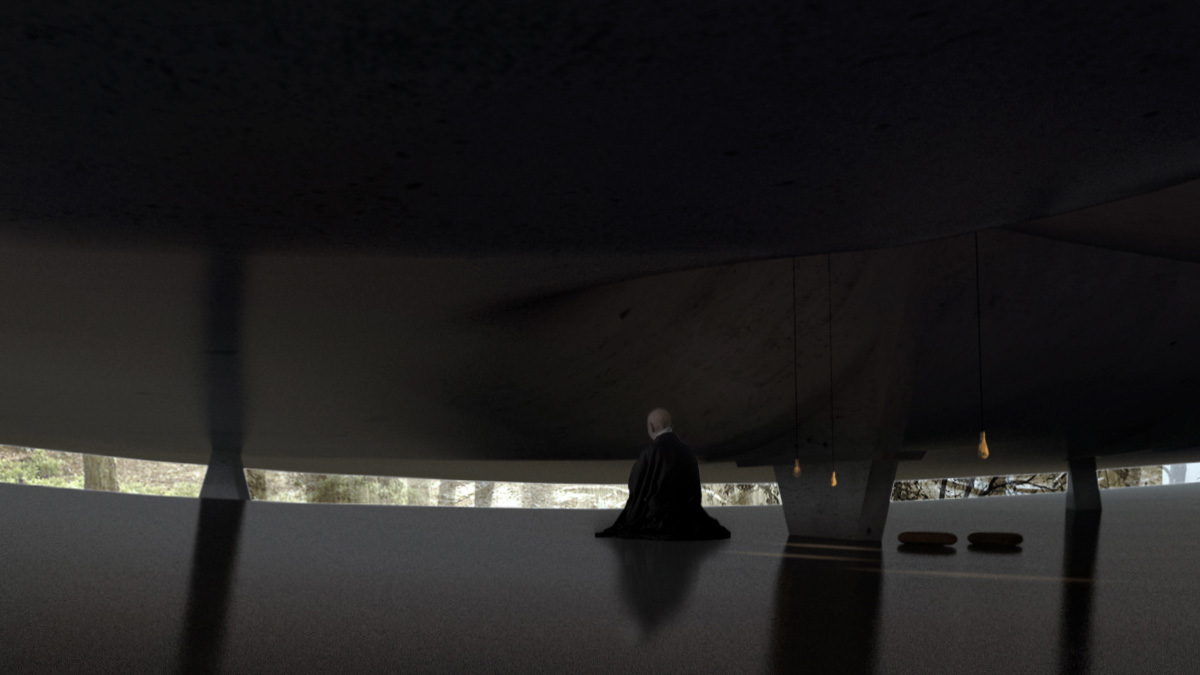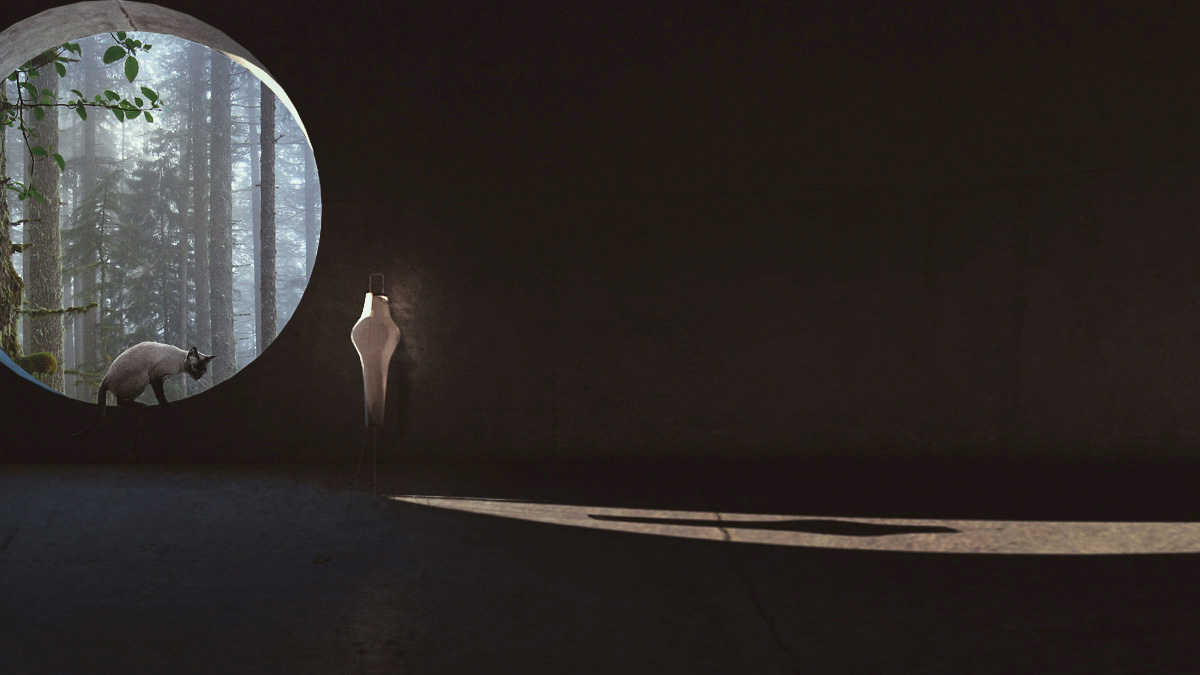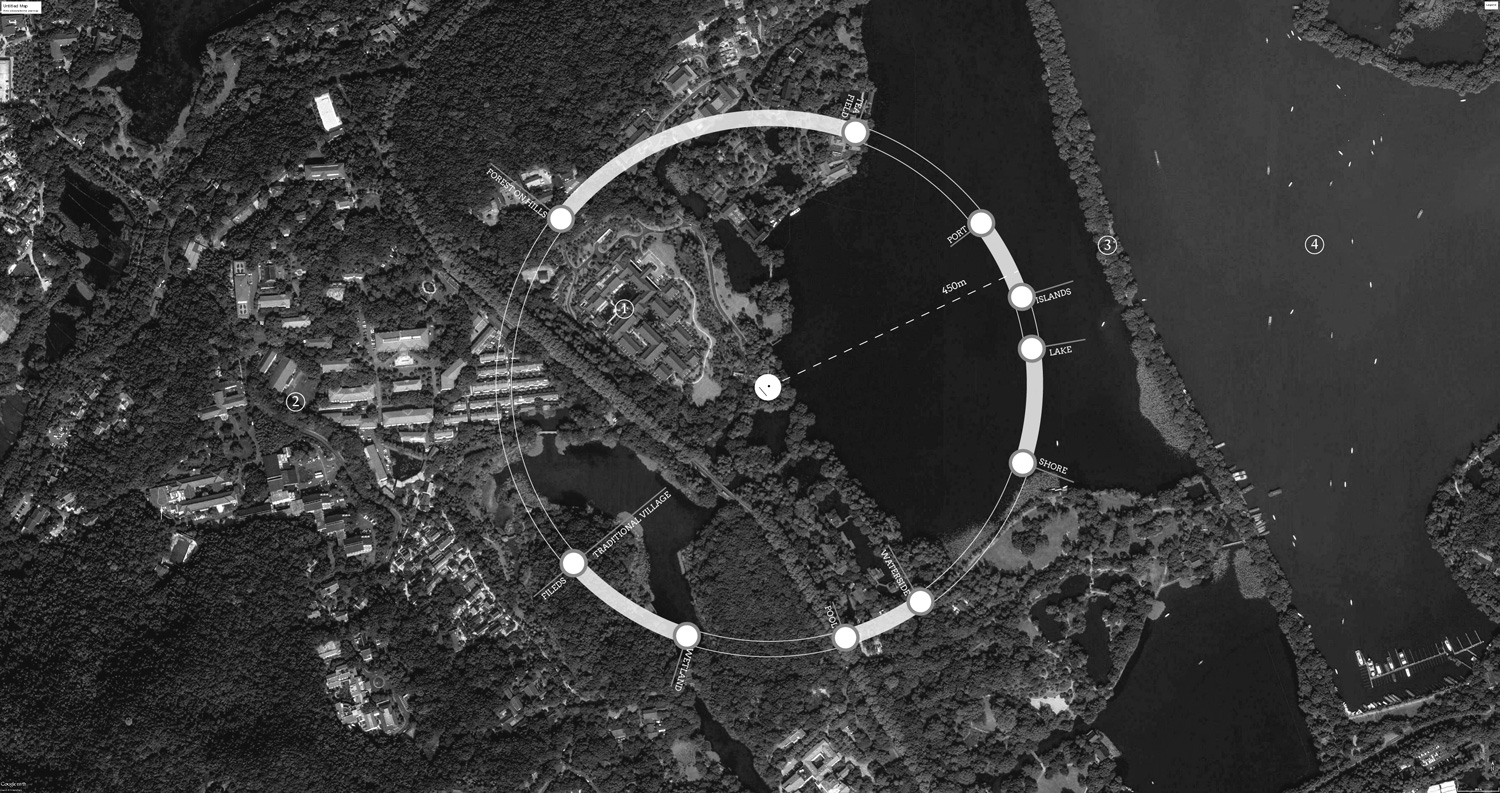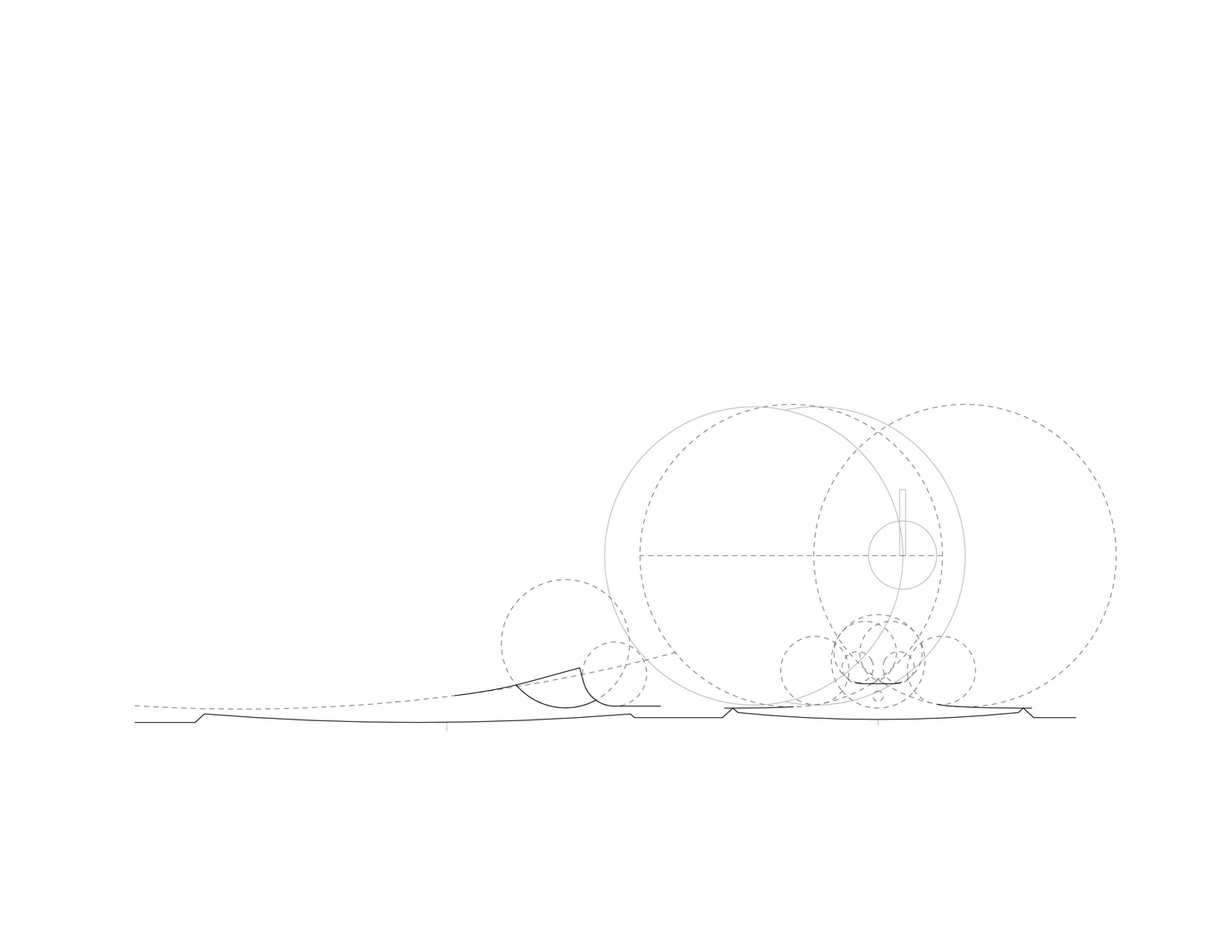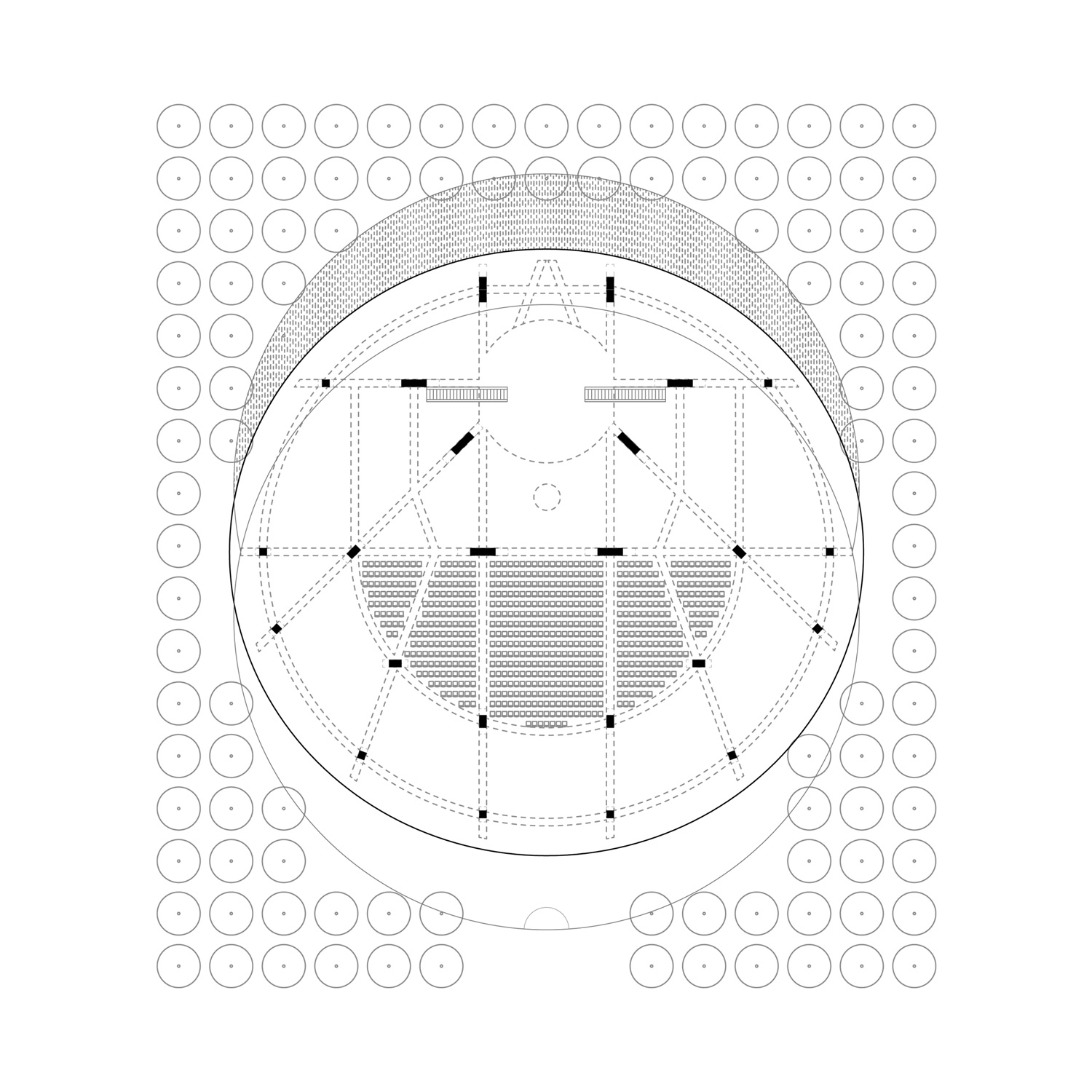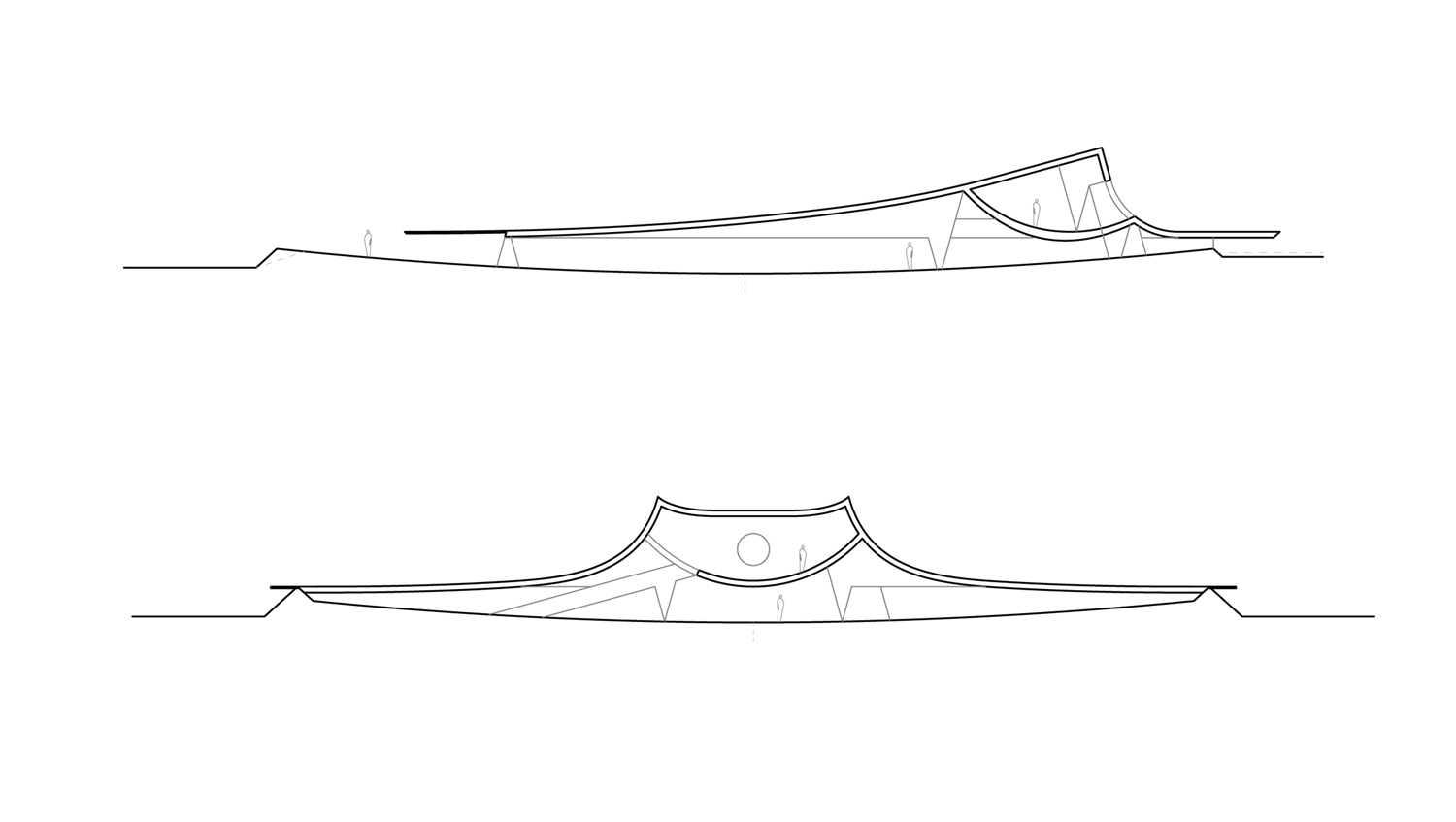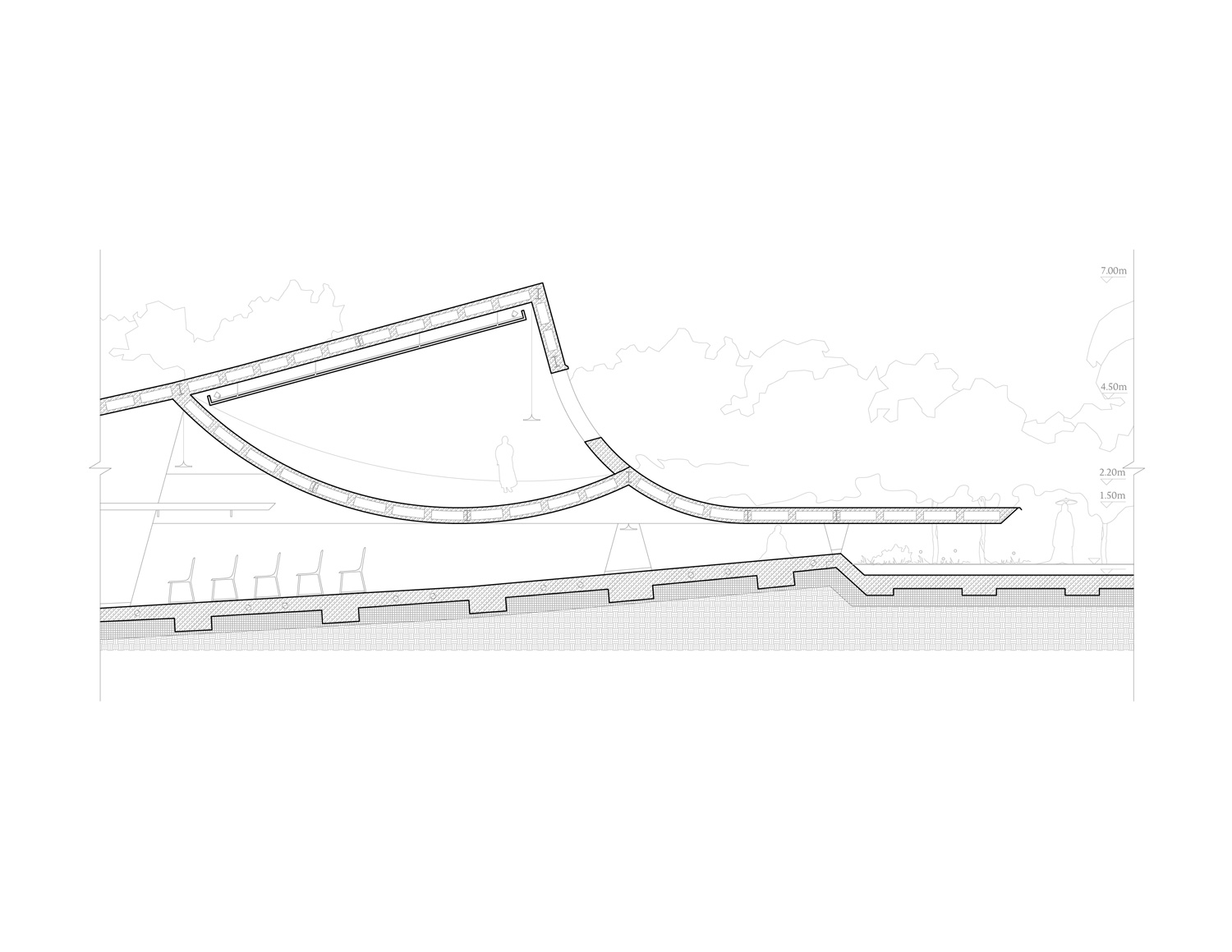2464-UNO-HGH.CN-2018
Client: Private
Status: Research
Location: Hangzhou, China
Coordinates: 30.235891, 120.130795
Climate: Humid subtropical, Temperate
Material: Concrete
Environment: Forest
Visualizer: Studio
Scale: 2.236 ㎡ Medium
Types: Religious, Religious center
Hangzhou Buddhist College needs an outdoor assembly place to host some temporary, large-scale events.
We design to weaken the conflicts between architecture and landscape as much as possible and to respond to oriental spirit and Zen in a certain sense.
As the most fundamental architectural and Chinese Garden prototype, the Chinese pavilion is our starting point. However, the much larger plan demand makes the pavilion’s volume too huge in terms of conventional pavilion proportions. We flatten the roof and make the eaves rise slowly from the ground to the treetops; let the building connect the West Lake and the sky.
We try to create a void between the roof and the ground, letting the wind and people slip through the void. People can come here stopping for a visit, or just passing by.
The ground is designed as a curved surface to accommodate the slope requirements of the auditorium seating. As the visitors slowly walk from the entrance to the center, space gradually widens with the raised roof and lowered floor. The initial depressed access to the central towering altar is a slow transition into the divine.
In the lower part, people can reach out and touch the bottom of the concrete roof; the «ridge» clipped at the top of the two curved ceilings, hidden in the shadow, implies a supernatural mystery. The curved and polished concrete on the ground allows the external light to be reflected and collected. Visitors will see the dark and mysterious roof and the self-reflection in the twilight of the floor. The bowled floor and the curved ceiling can also gather sound, amplifying and echoing the slightest sound, even like the footsteps, or the wind.
The gap between the roof and the ground creates a horizontal scrolling landscape. The circular layout provides a panoramic view of the surrounding landscape. When the vast roof defines the boundary of sight and squeezes everything into a gap, the mortal can see the world like a slightly opened Buddha’s eye. The curved roof profile makes the flat landscape under the eaves slightly bent, making the natural landscape more surrealistic.
The tapered pillar forest supports this huge but light-looking roof. The pillars, the scattered Buddha statues together with the visitors form the “world” between sky and ground.
The staggered roof and ground create a lowered space along one side, which together with the small meditation room on the second floor constitute the space for meditation. They are both facing the water, while the sparkling ripples can become the best meditation carrier.
The whole building is like a piece of paper floating on the edge of the trees by the water, welcoming visitors and the four seasons, the wind and the temple bell.
